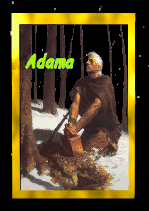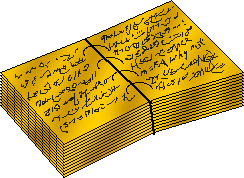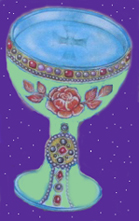
Forum encyclopédique d'histoire des Mormonismes et de la Franc-Maçonnerie & archéologie - sciences - aéronautique - paranormal - ufologie- orbs - ésotérisme - symbolisme
|
|
| | AMUN - AMUN-RE - Also AMMON |  |
| | | Auteur | Message |
|---|
Commandeur Adama
Magister Ordo Kolob - Admin

Nombre de messages : 8905
Age : 60
Localisation : Pays de Néphi - Mormon forest
Date d'inscription : 16/02/2007
Chevalier de Kolob - Vers la Sagesse
 A reçu la Lumière: 180 A reçu la Lumière: 180
 En quête du Vase Précieux et Elu: En quête du Vase Précieux et Elu:
    (150/200) (150/200)
 A la recherche du couple de Licornes du Jardin d'Eden: A la recherche du couple de Licornes du Jardin d'Eden:
    (7/700) (7/700)
 |  Sujet: AMUN - AMUN-RE - Also AMMON Sujet: AMUN - AMUN-RE - Also AMMON  Lun 30 Juin - 0:49 Lun 30 Juin - 0:49 | |
| AMUN - AMUN-RE - Also AMMON; AMON; AMUN; AMEN "Hidden."  A bearded Man wearing a cap surmounted by two tall plumes. A ram, a ram headed man, or a ram headed Sphinx. Self created at the beginning of time - linked to the Zep Tepi - believed to be the physical father of all Pharaohs. Some assume that Amun (Amen, Amon) was a relatively modern god within the context of ancient Egyptian religion. His worship at Thebes, where the earliest known Temple dedicated to him was located, is only documented from the 11th Dynasty onward. He gained most of his prestige after replacing the war god Montu as the principle god of Thebes - now Luzor - during Egypt's New Kingdom, when he was recognized as the King of Gods. At that time, because of Egypt's influence in the world, he actually became a universal god. In fact, by the 25th Dynasty, Amun-Re was even the chief god of the Nubian Kingdom of Napata and by the Ptolemic, or Greek period, he was regarded as the Egyptian equivalent of Zeus. However, he is actually mentioned in the pyramid text from the Old Kingdom - 5th Dynasty, Unas - line 558), which show him to be a primeval deity and a symbol of creative force. This text seems to assign great antiquity to his existence. Amun-Re grew so important spiritually and politically by the time of the New Kingdom that Egypt became something of a Theocracy. At the apex of his worship, Egyptian religion approached monotheism. The other gods became mere symbols of his power, or manifestations of Amun-Re. In essence, he became the one and only supreme deity. He was one of the eight Heh gods of the Ogdoad of Hermopolis, where his original consort was Amaunet (Ament). His worship may have originated at Hermopolis, but another possibility was that he functioned early on as a less prominent god at Thebes, where he eventually flourished. The Nubians, however, believed that he originated at Gebel Barkal, located in the modern north of the Sudan. In the middle of the 16th Dynasty, with the expulsion of the Hyksos rulers of Egypt, Amun's growth was accelerated due to the vindication of both Egyptian power and Amun-Re as a protector of both the Egyptian state and the Monarchy. At that time, temples were built and dedicated to Amun throughout Egypt, including the Luxor Temple and the Great Temple at Karnak. His importance during this and later periods is evidenced by the grander and extravagance of these temples. They were enlarged and enriched over the centuries by rulers of Egypt who were eager to express their devotion to Amun-Re. In fact, his growth to that of a national god mirrored the growth of Thebes in importance. This growth was accelerated when Amenemhet I took control of the thrown at Thebes, and founded the 12th Dynasty. However, the apex of his worship probably occurred during the New Kingdom onward at Thebes, where the important Opet festival was dedicated to Amun. During the Opet festival, the statue of Amun was conveyed by boat from the temple of Karnak to Luxor in order to celebrate Amun's marriage to Mut in his aspect of Ka-mut-ef (literally, "bull of his mother"). In this capacity, Amun was recognized for his procreative function. Together, Amun and Mut conceived their son, Khonsu, a moon god, to make of the Thebes Triad. The sacred animal of Amun was originally the Goose, and like Geb, he was sometimes known as the "Great Cackler". Later, Amun was more closely associated with the Ram, a symbol of fertility. The sacred animal of Amun was originally the Goose. At various times he also sometimes appears as a man with the head of a frog, the head of a uraeus, the head of a crocodile, or as an ape. However, when depicted as a king, he wears the crown of two plumes, a symbol borrowed from Min, and often sits on a throne. In this form, he is one of nine deities who compose the company of gods of Amen-Ra. In the Greek period (and somewhat earlier, in order to ascribe many attributes to Amun-Re, he was sometimes depicted in bronze with the bearded head of a man, the body of a beetle with the wings of a hawk, the legs of a man and the toes and claws of a lion. He was further provided with four hands and arms and four wings. | |
|   | | Commandeur Adama
Magister Ordo Kolob - Admin

Nombre de messages : 8905
Age : 60
Localisation : Pays de Néphi - Mormon forest
Date d'inscription : 16/02/2007
Chevalier de Kolob - Vers la Sagesse
 A reçu la Lumière: 180 A reçu la Lumière: 180
 En quête du Vase Précieux et Elu: En quête du Vase Précieux et Elu:
    (150/200) (150/200)
 A la recherche du couple de Licornes du Jardin d'Eden: A la recherche du couple de Licornes du Jardin d'Eden:
    (7/700) (7/700)
 |  Sujet: Re: AMUN - AMUN-RE - Also AMMON Sujet: Re: AMUN - AMUN-RE - Also AMMON  Lun 30 Juin - 0:50 Lun 30 Juin - 0:50 | |
|  The worship surrounding Amun, and later, Amun-Re represented one of ancient Egypt's most complex theologies. In his most mature form, Amun-Re became a hidden, secret god. In fact, his name (Imn), or at lest the name by which the ancient Egyptians called him, means "the hidden one" or "the secret one" (though there has been speculation that his name is derived from the Libyan word for water, aman. However, modern context seems to negate this possibility). In reality, however, and according to mythology, both his name and physical appearance were unknown, thus indicating his unknowable essence. Stated differently, Amun was unknown because he represented absolute holiness, and in this regard, he was different then any other Egyptian deity. So holy was he that he remained independent of the created universe. He was associated with the air as an invisible force, which facilitated his growth as a supreme deity. He was the Egyptian creator deity par excellence, and according to Egyptian myth, was self-created. It was believed that he could regenerate himself by becoming a snake and shedding his skin. At the same time, he remained apart from creation, totally different from it, and fully independent from it.  However, while hidden, the addition to his name of "Re" revealed the god to humanity. Re was the common Egyptian term for the sun, thus making him visible. Hence, Amun-Re combined within himself the two opposites of divinity, the hidden and the revealed. As Amun, he was secret, hidden and mysterious, but as Re, he was visible and revealed. In some respects, this even relates to his association with Ma'at, the Egyptian concept of order and balance, and reflects back upon the ancient Egyptian's concepts of duality. The secret, or hidden attribute of Amun enabled him to be easily synchronized and associated with other deities. At Thebes, Amun was first identified with Montu, but soon replaced him as the city's protector. His association with Re grew in importance when Amenemhet I moved the capital of Egypt to Itjtawy at the apex of the Nile Delta, where the relationship was probably expedient both theologically and politically. However, this association with Re actually grew as Thebes itself gained importance. Soon, Amun was identified with other gods as well, taking on the names (among others) Amun-Re-Atum, Amun-Re-Montu, Amun-Re-Horakhty and Min-Amun. However, it should be noted that with all of this synchronization, Amun was not absorbed to create a a new god. Instead, there was a unity of divine power with these other gods.  Amun-Re was associated with the Egyptian monarchy, and theoretically, rather than threatening the pharaoh's power, the throne was supported by Amun-Re. The ancient theology made Amun-Re the physical father of the king. Hence, the Pharaoh and Amun-Re enjoyed a symbiotic relationship, with the king deriving power from Amun-Re. In return, the king supported the temples and the worship of Amun. In theory, Amun-Re could even take the form of the king in order to impregnate the chief royal wife with the successor to the throne (first documented during the reign of Hatshepsut during the New Kingdom). Furthermore, according to official state theology during the New Kingdom, Egypt was actually ruled by Amun-Re through the pharaohs, with the god revealing his will through oracles. In reality, the god did in fact threaten the monarchy, for the cult of Amun-Re became so powerful that its priesthood grew very large and influential, and at one point, priests of the deity actually came to rule Egypt during the 21st Dynasty. At other times, Amun-Re created difficulties for the king, such as in the case of Akhenaten, who sought to change the basic structure of Egyptian religion. In this instance, Amun-Re eventually proved more powerful then the king, for though Akhenaten desperately tried to change the nature of Egyptian religion, for such efforts he himself became the scorn of later pharaohs. After Akhenaten's reign, Egyptian religion almost immediately reverted back to its prior form and to the worship of Amun-Re. | |
|   | | | | AMUN - AMUN-RE - Also AMMON |  |
|
| | Permission de ce forum: | Vous ne pouvez pas répondre aux sujets dans ce forum
| |
| |
| |
|

